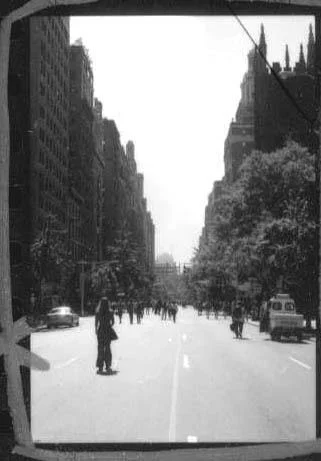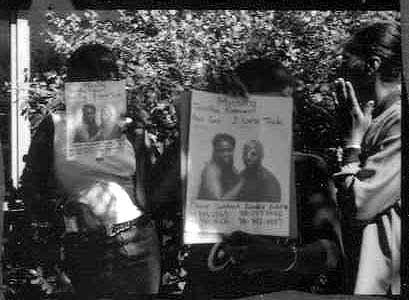Who Gets to Tell the Story of September 11, 2001?
By Ruth Sergel
We knew immediately that this was history.
As we stood looking at the towers, the smoke, that blue blue sky. All those people. Whatever we imagined was happening, the questions we asked each other, the calls we made.
We knew.
It was history.
After the attack there was a hush. Our beloved mash up of a city. Dirty, gentrified. Strivers and con artists. Like family -- we can trash it ourselves but outsiders better keep their yaps shut.
What we most needed was to tell the story over and over and over again. Stretching, pummeling, tying off until we could shape it into something it might be possible to live with.
What we got instead was an endless cycle of planes and buildings.
What we got was USA USA USA.
The gnawing inside. Our sense of humanity disrupted, the dream of who we are as individuals, as a nation, as citizens of the world. The unanswered questions; the why, the how, the US??
WE’RE #1!!
Cut off from others with similar experiences, no wonder it was nearly impossible to translate that day into language.
What can I DO?
I was volunteering at here is new york: a democracy of photographs. People brought us their images but they also brought their stories -- shattered, roughly constructed, falling apart, reconfigured, retold. We were all a little unglued. That vibrating stuck place. Stacks of stories were entrusted to us with more on the way and no place to put them all. Soon the slogans began to creep in. The clumsy, pat phrases from the corporate media. Ugly and imprecise. They served their purpose. Obfuscating rather than clarifying.
HEROES + NOBLE WIDOWS!!
Voices of 9.11 was the only defense I could imagine. Radical because it is so simple. A video booth, a plywood box really. HERE tell your story HERE. Before youTube, before Story Corps, make a video recording of your experience of 9.11. However much time you need to tell your story. No restrictions. You press the start and stop buttons. Any language. Your truth. Now go!
Over 550 people stepped forward to testify. In New York City. In Shanksville PA where flight #93 went down. In Washington DC and inside the Pentagon. It was 2002 to early 2003. Each story was a thread. Survivors and witnesses, children, military personnel, first responders, neighbors and family members. A time capsule from the moment when the story was becoming.
Jump ahead 10 years.
For the anniversary we put all 500+ testimonies online. Watching each one, there is an urge to seek commonality. But there is none. What makes the project a success is multiplicity. Some people who speak in the booth are still stunned. Others rage or cry. Most people are thoughtful, precise. There is no single through line. The tie that binds is the act of testifying, creating layer upon layer of refracted meaning.
Suzanne Wasserman invited me to present Voices of 9.11 at The Gotham Center. I show videos from the project. A man stands. He tries to ask a question but tells a story; his experience of September 11. The path is clear. The next person rises to testify. One story after another, it is an outpouring, a kaleidoscopic collaboration to create a picture of the day and its aftermath.
We reach the time to stop, to politely close out the evenings presentations.
But we aren’t finished yet.
People rush the start, hurry it along, try not to take up too much time. But soon breath finds its nature. The lie that our experiences could be contained by mere politics is exposed. There is a rumbling of the ground between us as the rhythm of each story finds its cadence. The stories that had been repressed claim their rightful place in the public realm.
Jump ahead 5 more years.
The fifteenth anniversary. Time is astonishing. There are college freshman with no actual memory of the event. Several of the Voices of 9.11 participants have passed away. Others have changed careers, had children, divorced or married. The planet spins on.
Voices of 9.11 tapped into the radical possibilities of grief. When we are exiled from the world as we knew it and forced to find new horizons to inhabit. The wonder of the moment when we reconsider what is actually important to us. Hold loved ones close. Say the words we always meant to say.
Or don’t.
The fragility of life.
That blue blue sky.
The little we could do.
Please watch the testimonies.
Ruth Sergel is an artist + agitator. Her first book See You In the Streets, including a chapter on Voices of 9.11, was published this year by the University of Iowa Press. For more on her work please see: www.streetpictures.org.





